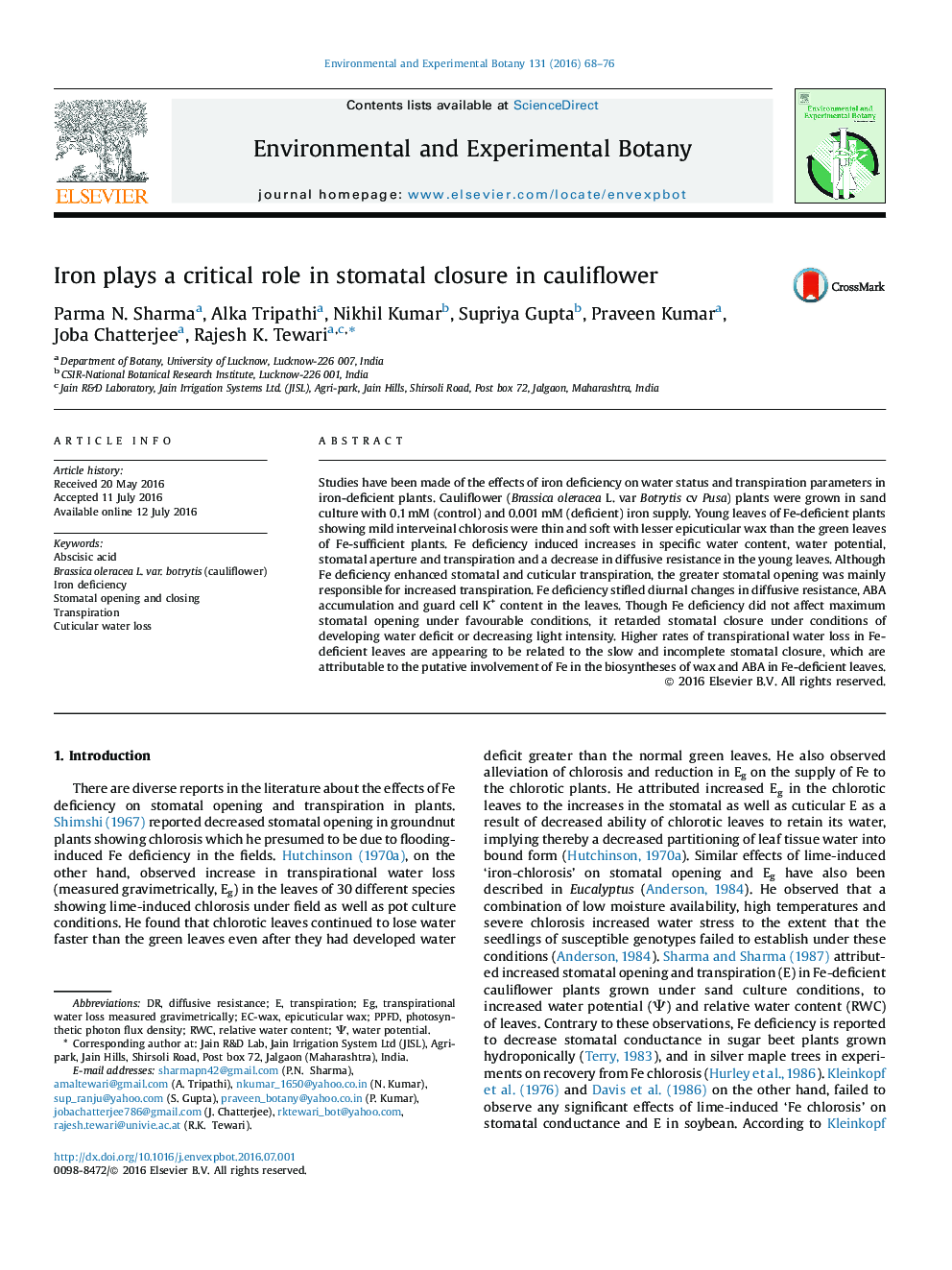| Article ID | Journal | Published Year | Pages | File Type |
|---|---|---|---|---|
| 4554000 | Environmental and Experimental Botany | 2016 | 9 Pages |
•Fe deficiency increases transpirational water loss in plants.•Fe-deficiency caused greater stomatal opening and increased transpiration.•Fe-deficiency retards stomatal closure under water deficit.•Fe-deficiency retards stomatal closure under decreasing light intensity.•Fe is putatively involved in the biosyntheses of wax and ABA.
Studies have been made of the effects of iron deficiency on water status and transpiration parameters in iron-deficient plants. Cauliflower (Brassica oleracea L. var Botrytis cv Pusa) plants were grown in sand culture with 0.1 mM (control) and 0.001 mM (deficient) iron supply. Young leaves of Fe-deficient plants showing mild interveinal chlorosis were thin and soft with lesser epicuticular wax than the green leaves of Fe-sufficient plants. Fe deficiency induced increases in specific water content, water potential, stomatal aperture and transpiration and a decrease in diffusive resistance in the young leaves. Although Fe deficiency enhanced stomatal and cuticular transpiration, the greater stomatal opening was mainly responsible for increased transpiration. Fe deficiency stifled diurnal changes in diffusive resistance, ABA accumulation and guard cell K+ content in the leaves. Though Fe deficiency did not affect maximum stomatal opening under favourable conditions, it retarded stomatal closure under conditions of developing water deficit or decreasing light intensity. Higher rates of transpirational water loss in Fe-deficient leaves are appearing to be related to the slow and incomplete stomatal closure, which are attributable to the putative involvement of Fe in the biosyntheses of wax and ABA in Fe-deficient leaves.
